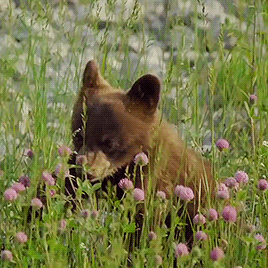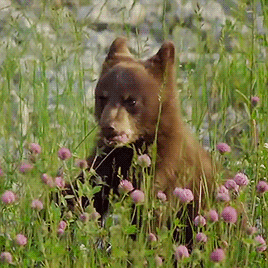Bearieblues - Waves In March

More Posts from Bearieblues and Others
WORLD BUILDING CHECKLIST
If you are writing a book/story that takes place in another world, I have provided for you the complete world building checklist to ensure that you know your world inside out.
Economy A. Currency B. Poverty rate/line
Government A. Crime & Legal System B. Foreign Relations C. Politics D. War
The Land A. Physical & Historical Features B. Climate C. Geography D. Natural Resources E. Population
Society & Culture A. Arts, Entertainment, & Recreation B. Architecture C. Calendar D. Daily Life. E. Diet F. Ethics & Values G. fashion & Dress H. History I. Dining Customs J. Education K. Language L. Gestures M. Manners N. Meeting & Greeting O. Religion & Philosophy P. Social organization
Magic A. Magicians B. Magic and science C. Magic & Technology D. Rules of Magic
Technology C. Technology D. Medicine D. Transportation & Communication you're welcome <3
Fell free to reblog and fill it out if you want. I am curious to see the worlds in my fellow writers heads.
Follow me @leisureflame for more posts like this!
May Prompts
post-magic
around the corner
geometry
antlers
display
ginger
divine will
mitochondria
carapace
amazement
spouse
uprising
guard
taking control
local birds
a version of you
her
aftermath of the heartbreak
preacher
last fragments
bioluminescence
eastern
generational trauma
moss
squabble
oven
abandoned laboratory
young president
charlatan
softened memory
the other life





Structuring Your Fight Scene
adapted from <Writer's Craft> by Rayne Hall
Suspense
Show your characters gearing up, readying themselves.
The pace is slow, the suspense is high (use suspense techniques)
Provide information about terrain, numbers, equipment, weapons, weather.
May have dialogue as the opponents taunt each other, hurl accusations, or make one final effort to avoid the slaughter.
Don't start too early - we don't need to see the hero getting out of bed, taking a shower and having tea.
2. Start
Fighters get into fight stance: knees slightly bent, one leg forward, abdominal muscles tensing, body turned diagonally, weapons at the ready.
Each side will usually try to be the first to strike, as this will give them advantage.
The movements in this section need to be specific and technically correct.
3. Action
This section may be quick or prolonged. If prolonged, no blow-by-blow descriptions are needed.
Focus on the overall direction of the fight
Make use of the location to make characters jump, leap, duck, hide, fall, etc.
Mention sounds of weapons
4. Surprise
Something unexpected happens: building catches fire, a downpour, relief force arrives, staircase collapses, bullet smashes into the only lightbulb and everything goes dark, hero losses his weapon, etc.
Add excitement, raise the stakes.
5. Climax
Both sides are tired and wounded
The hero is close to giving up, but is revived with passion
Move to the terrain's most dangerous spot: narrow swining rope-bridge, a roof-edge, sinking ship, etc.
Don't rush the climax! Hold the tension
6. Aftermath
The fight is over: bes buddies lying dead, bandaging, reverberating pain, etc.
Use sense of sight and smell
The hero may experience nausea, shaking, tearfulness or get sexually horny
Fight scene length
Historical/adventure/fantasy: 700-1000w
Romance: 400-700w
May Prompts 🌺
Word prompts to use for doodling or writing
strawberries
adventure
golden hour
lake house
picnic
mayflower
nostalgia
homecoming
juice box
farmer’s market
morning light
birdsong
drive-in theater
island
photographs
riptide
coffee-to-go
tree house
instrument
cerulean
porch
animal shelter
lemonade
potted plant
spirit
milkshake
orchids
field
petrichor
sketching
memory lane
-
 thekettlesoverthere liked this · 4 months ago
thekettlesoverthere liked this · 4 months ago -
 actually-a-girls-name reblogged this · 4 months ago
actually-a-girls-name reblogged this · 4 months ago -
 otb-28 liked this · 4 months ago
otb-28 liked this · 4 months ago -
 spoopyandtired liked this · 5 months ago
spoopyandtired liked this · 5 months ago -
 marvinmel liked this · 6 months ago
marvinmel liked this · 6 months ago -
 galesong liked this · 7 months ago
galesong liked this · 7 months ago -
 jennrg reblogged this · 10 months ago
jennrg reblogged this · 10 months ago -
 rosegold4578 liked this · 11 months ago
rosegold4578 liked this · 11 months ago -
 icanhazsims reblogged this · 1 year ago
icanhazsims reblogged this · 1 year ago -
 humanaagata liked this · 1 year ago
humanaagata liked this · 1 year ago -
 n02k liked this · 1 year ago
n02k liked this · 1 year ago -
 pumkiinpasties liked this · 1 year ago
pumkiinpasties liked this · 1 year ago -
 kisskisscantfallinlove reblogged this · 1 year ago
kisskisscantfallinlove reblogged this · 1 year ago -
 godofbadass8909 liked this · 1 year ago
godofbadass8909 liked this · 1 year ago -
 thepikachumaster liked this · 1 year ago
thepikachumaster liked this · 1 year ago -
 kalisbaby reblogged this · 1 year ago
kalisbaby reblogged this · 1 year ago -
 dancing-inasnowglobe liked this · 1 year ago
dancing-inasnowglobe liked this · 1 year ago -
 yotatech11 liked this · 1 year ago
yotatech11 liked this · 1 year ago -
 tjfinnigan reblogged this · 1 year ago
tjfinnigan reblogged this · 1 year ago -
 aitanarts liked this · 1 year ago
aitanarts liked this · 1 year ago -
 lu-nu reblogged this · 1 year ago
lu-nu reblogged this · 1 year ago -
 dorita-etal liked this · 1 year ago
dorita-etal liked this · 1 year ago -
 chedderchee liked this · 1 year ago
chedderchee liked this · 1 year ago -
 looneyloonatic liked this · 1 year ago
looneyloonatic liked this · 1 year ago -
 tyrannasauruslex liked this · 1 year ago
tyrannasauruslex liked this · 1 year ago -
 mystically-michaela reblogged this · 1 year ago
mystically-michaela reblogged this · 1 year ago -
 mystically-michaela liked this · 1 year ago
mystically-michaela liked this · 1 year ago -
 splatoweentown reblogged this · 1 year ago
splatoweentown reblogged this · 1 year ago -
 splatoweentown liked this · 1 year ago
splatoweentown liked this · 1 year ago -
 velocitations liked this · 1 year ago
velocitations liked this · 1 year ago -
 frankahstein reblogged this · 1 year ago
frankahstein reblogged this · 1 year ago -
 loureedpiss liked this · 1 year ago
loureedpiss liked this · 1 year ago -
 rooiboschailatte reblogged this · 1 year ago
rooiboschailatte reblogged this · 1 year ago -
 whataprettygarden liked this · 1 year ago
whataprettygarden liked this · 1 year ago -
 yiilinglaozu liked this · 1 year ago
yiilinglaozu liked this · 1 year ago -
 lostinthewoodsomewhere liked this · 1 year ago
lostinthewoodsomewhere liked this · 1 year ago -
 foulknightauthorpurse liked this · 1 year ago
foulknightauthorpurse liked this · 1 year ago -
 b1uechi1i liked this · 1 year ago
b1uechi1i liked this · 1 year ago -
 kaerah liked this · 1 year ago
kaerah liked this · 1 year ago -
 acen402 liked this · 1 year ago
acen402 liked this · 1 year ago -
 chemicallygoth liked this · 1 year ago
chemicallygoth liked this · 1 year ago -
 craigfernandez reblogged this · 1 year ago
craigfernandez reblogged this · 1 year ago -
 i-j0s liked this · 1 year ago
i-j0s liked this · 1 year ago -
 awishturnedwell liked this · 1 year ago
awishturnedwell liked this · 1 year ago -
 sofiaverasworld liked this · 1 year ago
sofiaverasworld liked this · 1 year ago -
 baby-snoopy liked this · 1 year ago
baby-snoopy liked this · 1 year ago -
 jondace liked this · 1 year ago
jondace liked this · 1 year ago -
 cosmicfangz liked this · 1 year ago
cosmicfangz liked this · 1 year ago




















